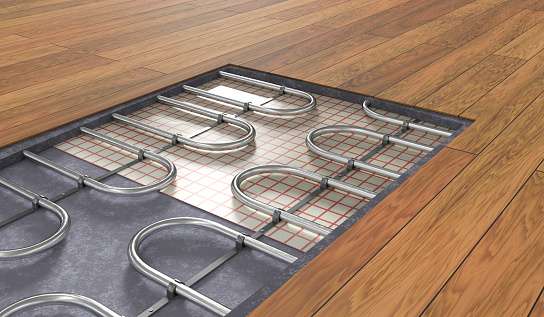This post may contain affiliate links which means I may receive a commission for purchases made through links.

Nowadays, underfloor heating systems are becoming increasingly popular among homeowners. However, they have been in use for several years in various parts of the world. In addition to being an efficient method of heating your home, these systems provide low costs. Best of all, you can apply them to several spaces around your home, making it an even more attractive option. But, what is an underfloor heating system? Well, read on to learn more!
Underfloor heating
Underfloor heating refers to a central heating system that uses convection, radiation, and conduction currents to provide thermal comfort and indoor climate control for your home. It’s a way of heating your home through sturdy and flexible tubes that are embedded in the floor. Surprisingly, this heating method dates back to the Neolithic and Neoglacial periods.
Another interesting thing about underfloor heating is that you can use it to warm your floor or act as the primary heat source in your home, replacing the radiators. Besides, it’s affordable and efficient, providing many benefits over radiators. At the same time, it’s very beneficial in terms of safety, energy efficiency, thermal comfort, and ergonomics.
It’s also worth mentioning that there are different kinds of underfloor heating systems. The 2 main forms are; water systems and electric systems. Water systems use the length of the pipe embedded in the floor, a heat source, and a water pump that pumps water through the tubing to heat the floor. On the other hand, electric systems utilize electrical cables to produce heat.
Various factors will determine the ideal underfloor heating system for your house. Some of those factors are; energy source, project types as well as the current heating system in your home.
What makes underfloor heating stand out from other heating systems?
the most unique thing about underfloor heating is that it ensures homogenous heat distribution, unlike in other heating systems. On top of that, it prevents heat accumulation from taking place in the ceiling and it can be used in any climate and location, provided the right engineering is made.
When it comes to the installation of this heating system, pipes are laid on the floor and covered with screed. Afterward, the flooring is down with materials such as parquet, ceramics, and tiles. You can use any floor coating to cover an underfloor heating system.
Pros of an underfloor heating system
- Creates a more comfortable, uniform temperature distribution
- Quieter operation than radiators and conventional HVAC systems
- More durable and easier to maintain
- Space saving & unobtrusive
- Reduces circulation of air pollutants
- Compatible with alternative energy sources
- Efficient heating
Cons of an underfloor heating system
- Difficult to repair
- Expensive & disruptive to install
Final word
Overall, underfloor heating is an energy-efficient and space-saving technique for heating your home. It will free up valuable space in your home and allow you to enjoy the feeling of warmth underfoot. On top of that, there are many benefits of underfloor heating, but there are a few drawbacks as well!
